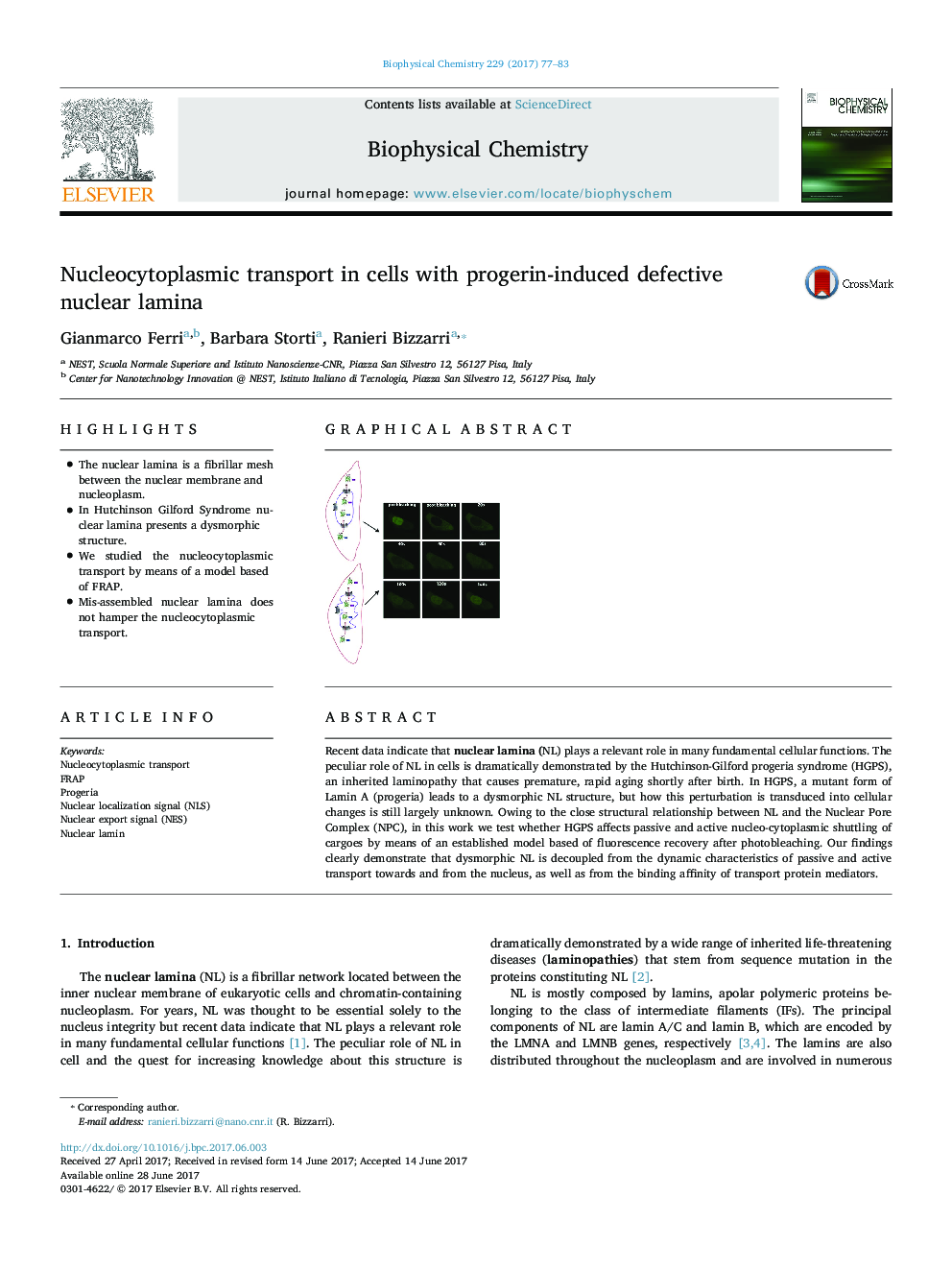| Article ID | Journal | Published Year | Pages | File Type |
|---|---|---|---|---|
| 5370611 | Biophysical Chemistry | 2017 | 7 Pages |
â¢The nuclear lamina is a fibrillar mesh between the nuclear membrane and nucleoplasm.â¢In Hutchinson Gilford Syndrome nuclear lamina presents a dysmorphic structure.â¢We studied the nucleocytoplasmic transport by means of a model based of FRAP.â¢Mis-assembled nuclear lamina does not hamper the nucleocytoplasmic transport.
Recent data indicate that nuclear lamina (NL) plays a relevant role in many fundamental cellular functions. The peculiar role of NL in cells is dramatically demonstrated by the Hutchinson-Gilford progeria syndrome (HGPS), an inherited laminopathy that causes premature, rapid aging shortly after birth. In HGPS, a mutant form of Lamin A (progeria) leads to a dysmorphic NL structure, but how this perturbation is transduced into cellular changes is still largely unknown. Owing to the close structural relationship between NL and the Nuclear Pore Complex (NPC), in this work we test whether HGPS affects passive and active nucleo-cytoplasmic shuttling of cargoes by means of an established model based of fluorescence recovery after photobleaching. Our findings clearly demonstrate that dysmorphic NL is decoupled from the dynamic characteristics of passive and active transport towards and from the nucleus, as well as from the binding affinity of transport protein mediators.
Graphical abstractDownload high-res image (132KB)Download full-size image
